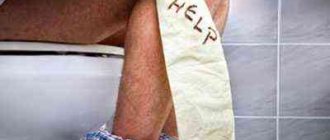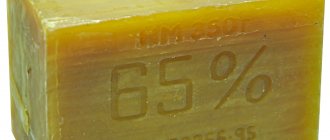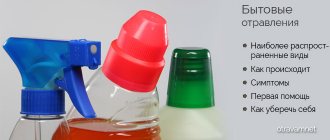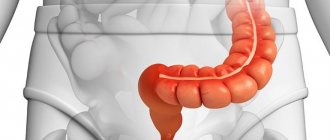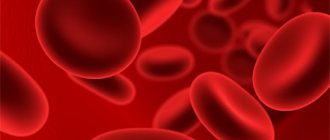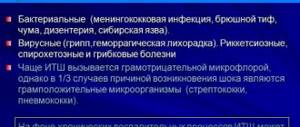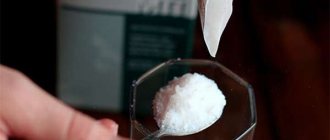Good afternoon, many will be interested in understanding their health and their loved ones, and I will tell you my experience, and we will talk about Types of enemas, techniques for administering them, indications for use. Most likely, some details may differ, as was the case with you. Please note that you should always consult with highly specialized specialists and not self-medicate. Naturally, you can quickly find the answer to the simplest questions and diagnose yourself. Write your questions/suggestions in the comments, and together we will improve and supplement the quality of the material provided.
An enema is one of the simplest and most effective methods of cleansing the intestines. Even in ancient times, it was used to get rid of many diseases. Today, the procedure also contributes to overall health, qualitatively eliminating accumulated harmful substances. In addition, it helps to cope with such a delicate problem as constipation. Let's consider indications and contraindications for enemas, types of enemas, rules for administering enemas. It is also important to know the specifics of preparing for the procedure.
Is preparation necessary?
No matter what type of enema you plan to use, you do not need to adhere to strict rules before using them.
- the day before the procedure, it is advisable to exclude foods rich in fiber from the diet;
- On the day before the enema, it is recommended to give preference to first courses.
If the purpose of the procedure is to cleanse the intestines, there is no need to take laxatives. They do not affect the result in any way.
Siphon enema
This procedure is considered complex, and therefore it is prohibited to carry out at home. It can only be performed in a clinic with a nurse and doctor present.
This type of enema is considered the most traumatic from both a physiological and psychological point of view, so it is performed by specialists who have extensive experience in this field and are able to create trusting contact with patients. In addition, a procedure performed independently at home can result in dysbacteriosis, regular constipation, and failure of intestinal motor function.
A siphon enema provides the maximum degree of cleansing, but even in medical institutions it is rarely performed. It is considered “heavy artillery” and is prescribed exclusively for health reasons:
- severe poisoning;
- intestinal obstruction;
- preparation for emergency surgical intervention of an unconscious patient;
- intussusception.
The method is based on the law of communicating vessels. In this case, they are a special funnel and the patient’s intestines. The interaction between them is achieved by changing the location of the container with rinsing water relative to the human body. Thanks to this, the liquid cleanses the intestines and leaves it immediately.
The procedure requires a large volume of boiled water (10-12 l), cooled to 38° C. Occasionally it is replaced with saline solution. No drugs are added to the water, with the exception of cases when it is necessary to introduce a substance that neutralizes poison in case of severe poisoning.
In addition to the action, the technique of administering them differs for all types of enemas. Siphon is considered the most difficult.
Algorithm of actions of a medical worker:
- A cleansing enema is performed first.
- The funnel is connected to a rubber tube, which is lubricated with a thick layer of Vaseline.
- After this, its end is inserted into the rectum to a depth of 20 to 40 cm. If difficulties arise at this stage, the nurse inserts the index finger into the anus, guiding the tube correctly.
- The funnel is filled with wash water and installed at a height of about 1 m.
- After the liquid in it runs out, it falls below the patient’s body. At this moment, water containing feces and harmful compounds begins to flow back into the funnel from the intestines. Then they are poured out and clean liquid is reintroduced into the intestines. The procedure is carried out until the rinsing waters become clear, indicating complete cleansing.
If non-disposable devices were used, they are thoroughly disinfected.
Preparing the patient for an enema and placement of a gas tube.
When carrying out manipulation, medical personnel invade the intimate and super-intimate zone of the patient (0-45 cm). Therefore, before performing the manipulation, it is necessary to carry out psychological and physiological preparation:
Psychological: (in the form of a conversation)
- Identification of contraindications at the time of manipulation.
- About the nature of the upcoming manipulation
- About the need for this manipulation
- About the patient’s sensations during the manipulation.
- About the patient's behavior after the manipulation.
Physiological:
- The patient is placed on the couch on his left side with his legs brought to his stomach.
- Lying on your back is possible.
Cleansing enema
Eating unhealthy foods and taking medications can negatively impact your gut health. As a result, it becomes “clogged” with harmful compounds that interfere with its normal functioning.
A cleansing type of enema helps get rid of waste and toxins, eliminating:
- bloating;
- stool disorders;
- weakness and fatigue;
- joint discomfort;
- pain localized in the right hypochondrium;
- bad breath.
In addition, the body's resistance to the effects of pathogenic microorganisms increases.
The cleansing type of enema refers to a procedure that is preferably performed either in the early morning (from 5 to 7 o'clock) or in the evening (from 20 to 21 o'clock). During these intervals, the intestines are maximally ready to get rid of harmful compounds.
The optimal positions for the procedure are the following:
- lying on your left side;
- knee-elbow;
- standing, bending forward;
- lying on your back.
For cleaning at home, you will need a rubber cylinder equipped with a long (1.5 m) tube and having replaceable tips. This product is called an Esmarch mug (simply an enema in the form of a heating pad). It comes in various capacities, the maximum being 2.5 liters.
We recommend reading: Red blisters on the body itch: photos of skin rashes, what it could be, and also, is it possible to pierce the blisters with liquid, and what to do if the burning sensation is severe?
It is important to pay attention to the tip - it should not be deformed, scratched, or have lost integrity. Before and after use, it must be washed and boiled.
Of no small importance is the water that is supposed to be introduced into the rectum. It needs to be boiled and cooled to 40° C. To achieve the maximum degree of purification, you can add 1.5 tbsp. l. salt or 2 tbsp. l. glycerin. It is allowed to use a decoction of herbs that have an anti-inflammatory effect. The optimal volume of liquid is 1.5-2 liters.
Cleansing type of enema - technique of administration:
- Lubricate the tip with baby cream, Vaseline or vegetable oil.
- After hanging Esmarch's mug, release the air from the tube. Place the tip on it.
- Gently insert it into the anus. The speed of water flow can be adjusted with a faucet or a regular clothespin, if it is not included in the kit.
- After the required volume of water enters the rectum, it must be kept inside for about 5-10 minutes. It is important that there is some liquid left in Esmarch's mug. This is necessary to prevent air from entering the body.
At the stage of inserting the tip into the anus, difficulties may arise. It can rest against the intestinal wall or feces and become clogged with them. In this case, it must be removed, washed and reinserted, but to a lesser depth.
Depending on the purpose of the production, there are different types of enemas:
Goal: administer the drug through the rectum and ensure its absorption.
Indications : - impossibility and ineffectiveness of administering the medicine by mouth;
- the need to influence the rectal mucosa in cases of inflammation, ulceration, etc.
Contraindications: depending on the drug substance.
Equipment: — rubber gloves and apron;
- oilcloth, diaper, towel;
— rubber pear-shaped can (No. 1 or No. 2);
- container with medicine;
— a tray with a disinfectant solution for waste material.
Equipment: — rubber gloves and apron;
Algorithm for performing the manipulation:
- Establish a trusting relationship with the patient, explain the purpose and course of the manipulation, and obtain his consent.
- Wash and dry your hands.
- Prepare everything you need.
- Wear an apron and gloves.
- Separate the patient with a screen, lay an oilcloth under the patient, and a diaper on top.
- Warn the patient that he must lie down after the enema for at least an hour.
- Fill a pear-shaped balloon with 50-100 ml of the prescribed medication, heated to a temperature of 37°C.
- Lubricate the gas outlet tube with Vaseline.
- Place the patient on his left side with his legs bent and brought toward his stomach.
- Spreading your buttocks apart, insert the gas tube into the rectum.
- Release the air from the cylinder.
- Connect a balloon to the tube and slowly inject the medication.
- Without opening the balloon, remove the tube and immerse it in the disinfectant solution, and wash the balloon with soap and running water.
- Remove the screen.
- Remove apron, gloves, immerse in disinfectant solution.
- Wash and dry your hands.
When and to whom can a therapeutic enema be given?
Treatment with microenemas is indicated for pathologies of the gastrointestinal tract, but before the procedure it is necessary to consult with your doctor (especially if a drug is administered). Diseases for which therapeutic enema is useful:
- cystitis;
- prostatitis;
- menstrual irregularities;
- infectious diseases of the rectum;
- inflammatory processes in the rectum, small, sigmoid colon;
- chronic constipation;
- nervous diseases.
The method is indispensable if it is not possible to take medications in other ways (injection, orally). Enemas are prescribed when examination of the gastrointestinal tract is required, before surgery and childbirth.
Important! Medicinal enemas are not recommended for use at home without a doctor’s prescription, even if the composition contains only herbal ingredients.
Hypertensive
- intoxication, food poisoning;
- prolonged constipation;
- intestinal dysbiosis;
- preparation for diagnostic procedures and operations.
Use salt solutions, for example, a mixture of table salt or magnesium.
Mechanism of action: the solution causes irritation of the intestinal mucosa - this way feces are better removed. The effect is achieved 3–5 minutes after administration of the liquid.
Instructions for doing it at home
An enema is used as a means of combating constipation; you can cleanse the intestines of waste and toxins, promoting weight loss. You can buy a pear at a pharmacy. Product volume:
- 50 g – for children’s enema;
- 300 g – volume for a standard enema;
- 500 g is the volume for a full enema of an adult body.
There are different tips made from plastic, silicone and rubber. In pharmacies, for convenient use, microenemas with a ready-made laxative are sold. A standard volume of syringe will help relieve constipation in an adult. To cleanse the intestines, it is recommended to use an Esmarch mug.
They give an enema to an adult at home with a pear, following step-by-step instructions, which include several stages.
Benefits and contraindications of medicinal enemas
A number of pathological conditions when the use of medicinal enema is prohibited:
- oncological diseases;
- rectal prolapse;
- presence of hemorrhoids;
- internal bleeding;
- trauma to the anus and rectum;
- inflammatory processes in the intestines;
- abdominal pain of unknown etiology.
Medicinal enemas are useful: they contain drugs that are freely absorbed into the circulatory system, bypassing the liver. Procedures with solutions of medicines, decoctions of plants, salts, and oils have a therapeutic effect.
Contraindications
Since intestinal irrigation always has an irritating effect on intestinal activity and the mucous membrane, there are situations when an enema cannot be performed:
- Vomiting or abdominal pain of unknown etiology,
- Acute abdominal diseases, such as inflammation of the peritoneum or intestinal obstruction,
- Intestinal ulcer,
- Severe diarrhea
- Early pregnancy or threat of miscarriage,
- After colon surgery,
- Bleeding in the digestive tract.
When is an enema better than medication?
A person faced with a delicate problem will look for a solution, which is better - an enema or a laxative. The answer is not clear in all situations. There are categories of patients for whom it is preferable not to use medications for a number of reasons.
At this age, metabolic processes in the body are significantly slowed down. The reaction to taking medications can be unpredictable. Higher risk of side effects. To avoid unnecessary stress for the body of an elderly person, it is better to resort to a laxative enema.
It is not recommended to take risks and try some new drug if you are prone to allergies. For such people, it is preferable to use a cool salt enema to cleanse the intestines. The effectiveness of stool obstruction is high, but the absorption of the solution in the intestine is minimized due to the low temperature.
If you have problems with stool in such a situation, it is advisable to periodically do an enema for a comfortable cleansing of the intestines. This is important both for general health and for the full effect of the medications taken: slagging of the intestinal lumen can significantly reduce the degree of absorption of drugs.
How to prepare for the procedure?
In order for the clyster to have maximum effect, you must complete the following steps:
- Make the solution in the required volume in advance.
- Hang Esmarch's mug and turn off the tap.
- Before inserting the tip, release the air from the container.
- Cover the surface where the patient is located with oilcloth or absorbent diaper.
- If the procedure is performed on a bedridden patient, a bedpan is placed next to the couch.
Proper preparation will help you avoid fuss and not worry about the risks of room contamination.
What types of oils can be used
Individually selected solutions are used. But there are general rules:
- The temperature of the mixture should be between 40–42 degrees.
- To increase efficiency, add 200 ml of chamomile infusion or 1 tbsp to the liquid. l. lemon juice.
- Total volume up to 1 liter.
A solution of sodium chloride and 5% glucose is often used as a nutrient.
This type is the most popular among the others; it is taken more often because it has good antiparasitic properties.
We recommend reading: Herb jaundice: gray for weight loss, gillyflower, spreading. Application, contraindications
This remedy is based on a natural herbal product and can be used at any age of the patient if the correct functioning of the intestines is disrupted.
If you have had no bowel movements for a long period, this is a sign of a large number of abnormalities. This means you need to immediately begin treatment and use olive oil for constipation. This remedy not only has an effective effect, but also has a safe effect on the patient’s body.
Olive oil contains a large number of beneficial components.
This type should be used only after the signs of the disease have been accurately determined, because when used during normal periods, it can have a laxative effect and have a bad effect on the body.
Contraindications to the use of vegetable oil:
- pregnancy at any stage;
- intolerance to components in oil;
- bleeding in the intestines;
- intestinal obstruction.
For constipation, large amounts of laxatives are often used, but home remedies such as oils are more effective. Very often, flaxseed oil is used for constipation.
This species has a lot of useful substances and has laxative properties.
This type of oil is used at any age. It contains a large number of useful components, which explains its excellent approach to a delicate problem.
For constipation, diet is very important, and castor oil is also often used. This type also has an excellent effect, like all the others. It has few contraindications compared to medications. Therefore, it is often used at any age.
Enemas have different compositions. The most commonly used medicines are:
- starch (prescribed to coat the rectal mucosa);
- antibacterial drugs in the form of solutions;
- chamomile (effective for inflammatory processes);
- adrenaline in the form of a mixture (to eliminate bleeding);
- fern root;
- valerian;
- ferric chloride;
- Oak bark;
- zinc sulfate in combination with a solution of lapis;
- marshmallow root;
- poppy heads;
- flax seeds;
- anesthetic solutions;
- glucocorticoids, sulfasalazine (indicated for Crohn's disease and ulcerative colitis);
- collargol in the composition with oil and antipyrine (for the treatment of proctosigmoiditis);
- potassium permanganate, protargol in the form of weak solutions (for astringent enemas).
Most often, enemas are used as a laxative. They are used for intestinal obstruction, before fasting, surgery or before childbirth. The laxative effect can be enhanced in various ways.
Reducing the temperature of the inlet fluid to approximately 32 °C stimulates intestinal motility. The cleaning liquid, which in most cases is water, can be diluted with various agents. Olive oil (oil clyster) or milk softens the stool, and saline or sorbitol increases osmosis.
In some cases, medications that are usually given orally must be delivered to the body through an enema. Taking medications through an enema has several benefits. First of all, the first pass effect is reduced. Each orally administered product first passes through the liver before entering the bloodstream and then reaching the target organ.
For hepatic encephalopathy, that is, brain damage caused by cirrhosis, a lactulose enema is often performed. Brain damage is caused by ammonia in the blood. Lactulose contained in the liquid binds this ammonia and removes it from the body.
Keoxalate (contained in the drug "Resonium A") is prescribed for acute or chronic renal failure. Due to damaged kidneys, potassium is not utilized normally from the body. Resonium A is a useful drug used to exchange potassium ions for sodium ions. For optimal effect, the liquid should remain for four to ten hours in the patient's anus.
Irrigators or bulb syringes are used to administer fluid. Clyster is used in hospital settings for therapeutic and diagnostic purposes. To obtain x-rays, the liquid is mixed with a contrast agent. It then passes through the anus into the patient's colon and spreads there.
Enemas are also used to diagnose fecal incontinence. They measure the amount of fluid that can be inserted until it exits through the anus. Another test involves injecting 500 ml of liquid into the rectum and measuring the time it takes the patient to consciously retain the substance before defecation.
An excerpt characterizing the Enema (tool)
- Mom!... Mom!... he did it to me... - What did he do? - I did, I proposed. Mother! Mother! - she shouted. The Countess could not believe her ears. Denisov proposed. To whom? This tiny girl Natasha, who had recently been playing with dolls and was now taking lessons. - Natasha, that’s complete nonsense! – she said, still hoping that it was a joke. - Well, that's nonsense! “I’m telling you the truth,” Natasha said angrily. – I came to ask what to do, and you tell me: “nonsense”... The Countess shrugged. “If it’s true that Monsieur Denisov proposed to you, then tell him that he’s a fool, that’s all.” “No, he’s not a fool,” Natasha said offendedly and seriously. - Well, what do you want? You are all in love these days. Well, you’re in love, so marry him! – the countess said, laughing angrily. - With God blessing! - No, mom, I’m not in love with him, I must not be in love with him. - Well, tell him so. - Mom, are you angry? You’re not angry, my dear, what’s my fault? - No, what about it, my friend? If you want, I’ll go and tell him,” said the countess, smiling. - No, I’ll do it myself, just teach me. Everything is easy for you,” she added, responding to her smile. - If only you could see how he told me this! After all, I know that he didn’t mean to say this, but he said it by accident. - Well, you still have to refuse. - No, don't. I feel so sorry for him! He is so cute. - Well, then accept the offer. “And then it’s time to get married,” the mother said angrily and mockingly. - No, mom, I feel so sorry for him. I don't know how I'll say it. “You don’t have anything to say, I’ll say it myself,” said the countess, indignant that they dared to look at this little Natasha as if she were big. “No, no way, I myself, and you listen at the door,” and Natasha ran through the living room into the hall, where Denisov was sitting on the same chair, by the clavichord, covering his face with his hands. He jumped up at the sound of her light steps. “Natalie,” he said, approaching her with quick steps, “decide my fate.” It's in your hands! - Vasily Dmitrich, I feel so sorry for you!... No, but you are so nice... but don’t... this... otherwise I will always love you. Denisov bent over her hand, and she heard strange sounds, incomprehensible to her. She kissed his black, matted, curly head. At this time, the hasty noise of the countess's dress was heard. She approached them. “Vasily Dmitrich, I thank you for the honor,” said the countess in an embarrassed voice, but which seemed stern to Denisov, “but my daughter is so young, and I thought that you, as a friend of my son, would turn to me first.” In this case, you would not put me in the need of refusal. “Gafinya,” Denisov said with downcast eyes and a guilty look, he wanted to say something else and faltered. Natasha could not calmly see him so pitiful. She began to sob loudly. “Countess, I am guilty before you,” Denisov continued in a broken voice, “but know that I adore your daughter and your entire family so much that I would give two lives...” He looked at the countess and, noticing her stern face... “Well, farewell, lady,” he said, kissed her hand and, without looking at Natasha, walked out of the room with quick, decisive steps. The next day, Rostov saw off Denisov, who did not want to stay in Moscow for another day. Denisov was seen off at the gypsies by all his Moscow friends, and he did not remember how they put him in the sleigh and how they took him to the first three stations. After Denisov’s departure, Rostov, waiting for the money that the old count could not suddenly collect, spent another two weeks in Moscow, without leaving the house, and mainly in the young ladies’ room. Sonya was more tender and devoted to him than before. She seemed to want to show him that his loss was a feat for which she now loves him even more; but Nikolai now considered himself unworthy of her. He filled the girls' albums with poems and notes, and without saying goodbye to any of his acquaintances, finally sending all 43 thousand and receiving Dolokhov's signature, he left at the end of November to catch up with the regiment, which was already in Poland. After his explanation with his wife, Pierre went to St. Petersburg. In Torzhok there were no horses at the station, or the caretaker did not want them. Pierre had to wait. Without undressing, he lay down on a leather sofa in front of a round table, put his big feet in warm boots on this table and thought. – Will you order the suitcases to be brought in? Make the bed, would you like some tea? – asked the valet. Pierre did not answer because he did not hear or see anything. He began to think at the last station and continued to think about the same thing - about something so important that he did not pay any attention to what was happening around him. Not only was he not interested in the fact that he would arrive in St. Petersburg later or earlier, or whether he would or would not have a place to rest at this station, but it was still in comparison with the thoughts that occupied him now whether he would stay for a few days. hours or a lifetime at this station. The caretaker, the caretaker, the valet, the woman with Torzhkov sewing came into the room, offering their services. Pierre, without changing his position with his legs raised, looked at them through his glasses, and did not understand what they could need and how they could all live without resolving the questions that occupied him. And he was preoccupied with the same questions from the very day he returned from Sokolniki after the duel and spent the first, painful, sleepless night; only now, in the solitude of the journey, did they take possession of him with special power. No matter what he started to think about, he returned to the same questions that he could not solve, and could not stop asking himself. It was as if the main screw on which his whole life was held had turned in his head. The screw did not go in further, did not go out, but spun, not grabbing anything, still on the same groove, and it was impossible to stop turning it.
How much stool retention is considered constipation in an adult?
There are no exact numbers to answer this question. Everyone’s body works individually depending on the composition and diet, the volume of fluid consumed, age, and the presence of any diseases.
It is considered normal to have a bowel movement once every 1 to 2 days. At the same time, people who are accustomed to going to the toilet several times a day will feel uncomfortable if they hold stool for 2 days, although for some this frequency is normal. The general figures that are considered constipation in a relatively healthy adult with a normal diet are 4–5 days without bowel movements.
In most cases, an enema works quickly and effectively. The result is observed a maximum of 15 minutes after the procedure. If the enema does not help, it may have been performed incorrectly. For example, a person ran to the toilet too quickly, and the solution spilled out without having time to have an effect on the hardened feces.
We recommend reading: Rotavirus gastroenteritis: symptoms, treatment and diagnosis
The use of any laxatives, including enemas, should not become systematic. The intestines “get used” to constant assistance, its tone decreases. Frequent enemas help wash out beneficial microflora from the intestinal lumen. All this can lead to deterioration in health. If constipation becomes chronic, you should consult a doctor.
How often should the procedure be performed?
It is advisable to resort to manipulation 1-2 times throughout the month. If done regularly, the beneficial microflora is washed out, and it will take a long time to restore it. Another reason for regulating the enema is the removal of only 10% of the liquid from the intestines. The rest is absorbed into the tissues and bloodstream, causing swelling.
Frequent setting leads to impaired motor skills. The intestines become lazy and cannot cope with the functions assigned to them.
During the course, no more than 6-7 enema manipulations are recommended, which are done every other day.
Preparation
For the nutrient (drip) enema procedure you will need the following tools:
- Oilcloths;
- Large diapers;
- Water thermometer;
- Heating pads with a temperature of 40°-45°C.
The solution in the enema should be at a temperature t° of 40°-42°C.
The procedure can only be carried out in a special enema room. There is also a toilet in a special room intended for patients.
In most cases, an enema works quickly and effectively. The result is observed a maximum of 15 minutes after the procedure. If the enema does not help, it may have been performed incorrectly. For example, a person ran to the toilet too quickly, and the solution spilled out without having time to have an effect on the hardened feces.
Procedure technique
Before administering the enema, you need to sit quietly for about 15 minutes, no need to be nervous. You can ask a relative to help with the procedure or call a nurse to your home.
Execution technique.
- A cleansing enema is given at night, a couple of hours after dinner or in the morning an hour before breakfast.
- The procedure is carried out either in a knee-elbow position, or lying on the left side or back with bent legs.
- The anorectal tip is inserted first towards the navel, and after passing through the sphincters of the anus, it is advanced parallel to the coccyx.
- The solution is injected slowly into the rectum using a Janet syringe or an enema bulb.
After completing the procedure, the anorectal tip is washed, cleaned with a napkin soaked in a disinfectant solution, and placed for 60–90 minutes in a 3% chloramine solution or a 4% peroxide solution. Then the tip is rinsed in running water and sterilized in an autoclave or boiled for 15 minutes in a soda (2%) solution. You can use water to boil, the duration of this treatment is 30 minutes.
Warnings
So, the article examines in detail the technique proposed by the Russian surgeon Ognev, which was called “fire enema” among colleagues who are not without humor. The name fully justifies itself: it gives a strong, powerful effect, an incentive for cleansing. The enema works in conditions of complete, partial intestinal atony or relaxation after surgery, during the recovery period.
There is also a hypertensive enema. They remember it when it comes to washing according to Ognev. A doctor's permission is also required. There are contraindications. Belongs to the category of potent, small dosage. Relieves pressure from the body and gives a feeling of lightness. In both cases, it is advisable that the washing procedure be carried out by specially trained personnel.
Both procedures are effective, time-tested by many people. There are positive reviews from doctors and patients. Due to the strong effect on the body, it cannot be used frequently. It is important to follow the dosage. It is better to supply an insufficient amount of solution, reducing the risk of side effects.
A professional, competent approach to using an enema according to Ognev will give results and is effective in most cases. Used in combination with diet and medications, the results are greatly enhanced.
Enema for babies
In families with infants, sooner or later the topic of constipation comes up. And the young mother begins to worry: how to properly give an enema to the baby? Pharmacies sell special pears. Volume for a one-month-old baby 25 ml, up to six months 25-50 ml, from 6 months to a year 120 ml.
An enema to cleanse the intestines of a baby is given only as a last resort to avoid injury and irritation of the intestinal mucosa.
Scheme for colon cleansing with enemas
There is a developed scheme for performing cleansing enemas before starting any treatment or in parallel with it. Cleansing with enemas according to the scheme cleanses the body of toxins. Before starting treatment for any chronic skin disease, a cleansing enema is necessary.
Colon cleansing with enemas is carried out according to the following scheme
| A week | Frequency of enemas |
| 1 | Weekly |
| 2 | In one day |
| 3 | After two days |
| 4 and all subsequent ones | Once a week |
Features of performing an enema
An enema has a beneficial effect on the body and individual organs. When administered, including medication, absorption of the drug by the intestinal walls begins. If we talk about medicinal, it means more of a local effect. Of course, the body also benefits, only indirectly. The purpose of treatment is to influence the area of the body or organ that requires treatment.
A rubber bulb is used for staging. A less common option: a Janet syringe with a special catheter.


